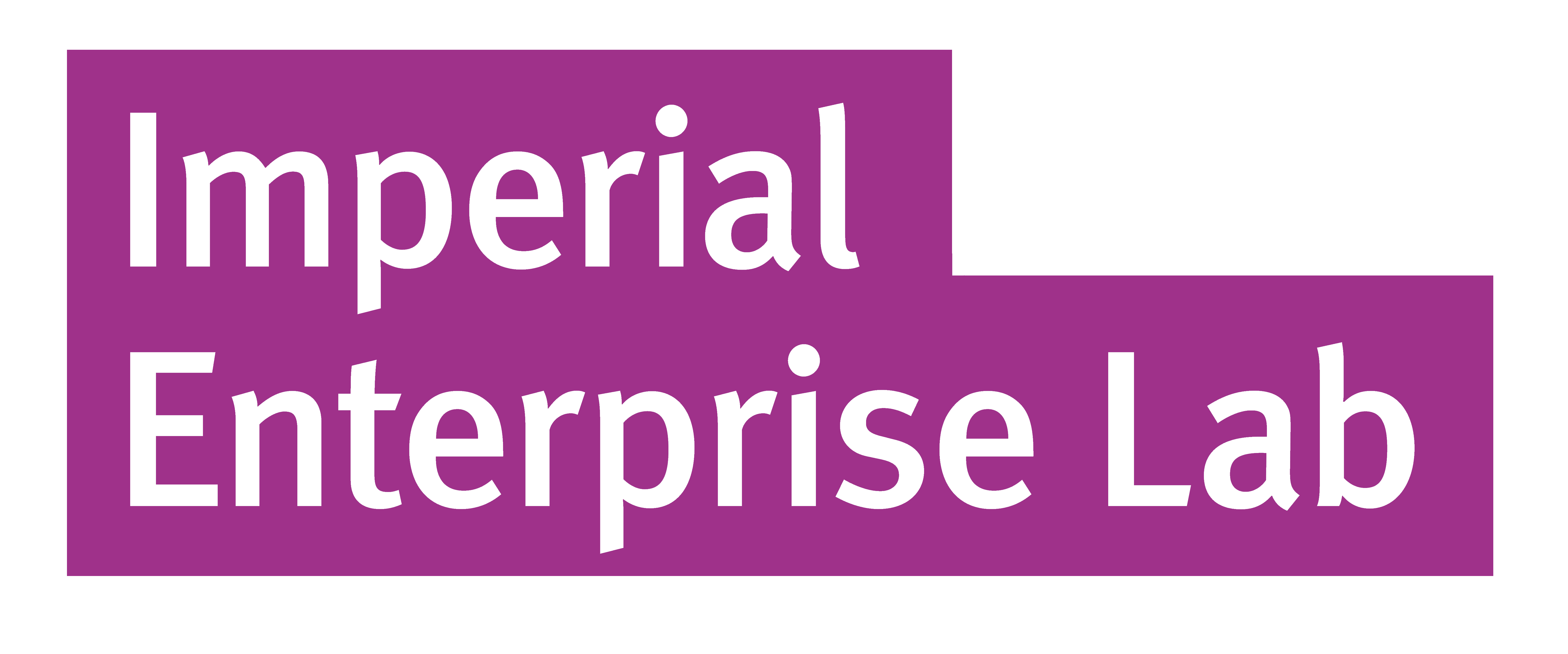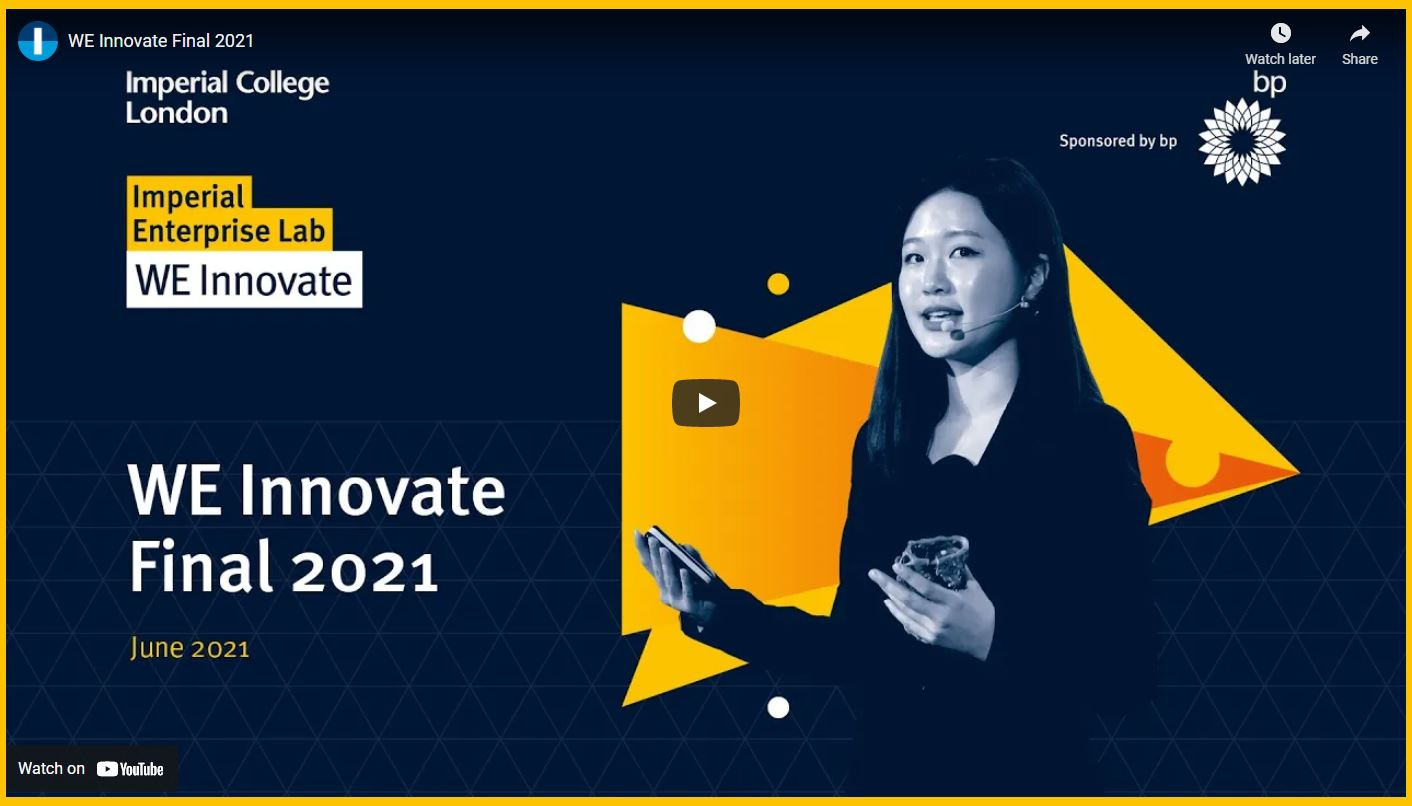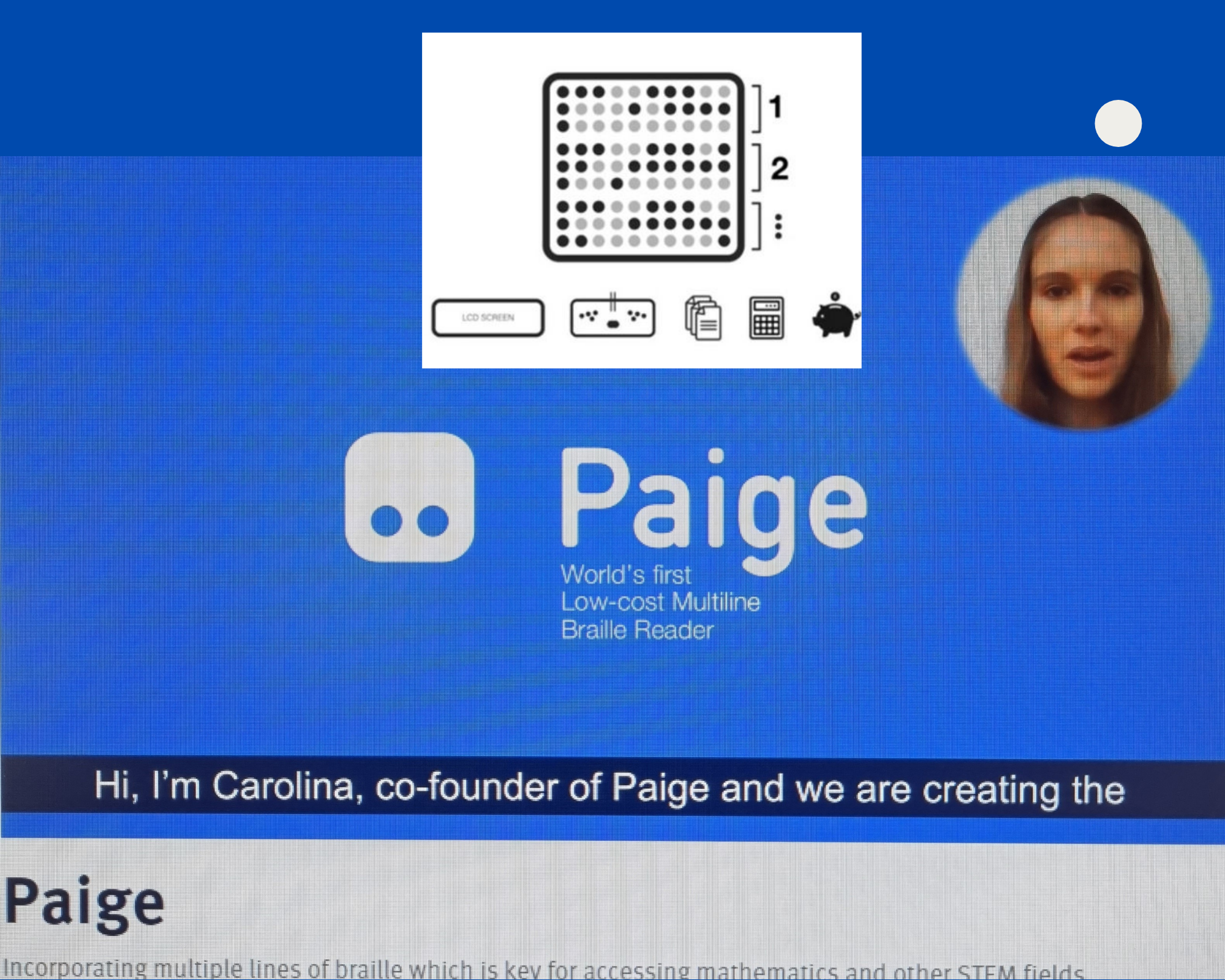WE Innovate – 2021
Back to Competitions | WE Innovate is Imperial’s flagship female entrepreneurship education programme designed to support the next generation of women entrepreneurs to accelerate their startups. The six-month programme supports female students, developing an early-stage business idea, to advance their leadership and entrepreneurial skills. One of our key goals of this competition is to increase the number of female engineers setting up their own ventures and the WE Innovate team works closely with the Faculty of Engineering to promote the programme directly to engineers. |


Joint Winner
Zyme Biosciences, Marta Broto-Aviles, Post-Doc, Department of Materials (Engineering) and Schan Dissanayake-Perera, Engineering PhD Student in Materials – £1,500 Engineers in Business Prize
QwikZyme is a small, integrated, disposable device for disease diagnosis, with integrated steps to make it user-friendly and fast (providing results in only 20 minutes). The key selling point is that QwikZyme has better analytical sensitivity than competing technologies. The launching product and initial prototype are designed to diagnose COVID-19, but this is just the beginning. There is ongoing research to use this technology for the early diagnosis of a suite of infectious and non-communicable diseases. The vision is that every GP will have a set of devices targeted to different diseases to be used during the patient visit.

Joint Winner
Paige, Carolina Gomes, Biomedical Engineering – £1,500 Engineers in Business Prize
Paige is the world’s first digital low-cost and multiline braille device. Braille is essential for visually impaired people to access information. All modern braille technology is limited to single-line text – this makes reading time consuming and laborious for the blind and certain fields, such as STEM subjects, very difficult to access. On top of this, current devices are very expensive. Paige, incorporates multiple lines of braille, which is key for accessing mathematics and other STEM fields. The low-cost nature of the solution greatly increases its accessibility, allowing the device to support visually impaired people all around the world from school all the way to the professional world.
Positive feedback
Women entrepreneurs need resources, funding and support to excel in their innovation. The Engineers in Business is an essential award to help teams with engineering backgrounds break boundaries and scale their innovation. Imperial Enterprise Lab is once again pleased to be working with the Engineers in Business Fellowship to support engineering students, graduates, and postgraduates in their participation in entrepreneurship.
Alae Ismail, Innovation & Entrepreneurship Manager, Imperial Enterprise Lab
